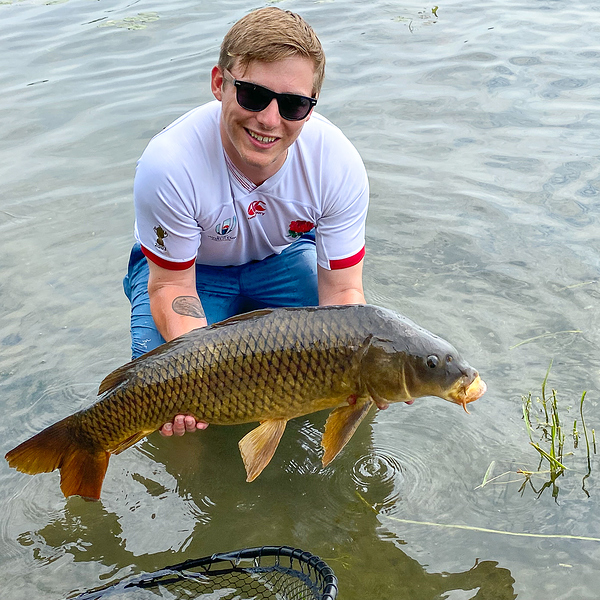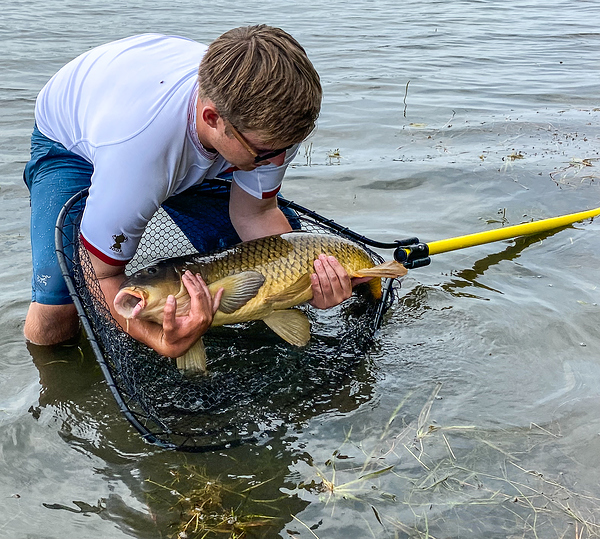Jack Hanna
Each spring, for a brief time, big crowds of big fish make a big commotion in the Rideau Canal. It is the annual spawning of the common carp.
And passersby can witness it.
This fish love-fest, which a local biologist describes as “an orgy,” likely will occur within the next three weeks.
The favourite venue for spawning is within easy walking distance of Centretown. It is the small pond on the west side of the canal beneath the Flora Footbridge at Fifth Avenue. The carp swim through a pipe joining the pond and the canal, and a mob of fish churns the pond’s surface.
As well, the occasional small group of carp can be seen along the canal’s west wall.
The frenetic fish can be viewed only for a few days, in late April or early May. Carp are reclusive and stay out of sight of humans – except during spawning, when they abandon all caution.

“They get down to business and don’t care what’s going on around them,” says Steven Cooke, professor of biology and environmental science at Carleton University. “They are not paying attention to a whole lot else.”
The spawning season is triggered by warming waters and increasing sunlight. When the time is right, these sizeable fish, commonly more than half a metre in length, congregate in a place that provides good habitat for the young, with food and hiding places in the weeds and muddy bottom.
During spawning, female carp cruise about and extrude eggs into the water, A single female distributes hundreds of thousands of eggs. The males release sperm.
So that the sperm and eggs can meet, the male carp are obsessed with getting close to females. The males relentlessly jockey for position, often churning the surface. “A male wants to be beside a female and ideally between multiple females,” says Cooke.
“There’s a whole lot of splashing. There’s a lot of crisscrossing, crossing over on top of each other.”
A male also is trying to nudge a female. That’s “part of courtship,” says Cooke. “It gets the hormones raging and loosens up the female’s eggs.”
Where do the carp go, once spawning is over?
The fish can travel through the locks. However, they typically make a life in the Centretown portion of the canal. They winter beneath the ice on Dow’s Lake, moving slowly to conserve energy and slurping the occasional snack of crayfish and worms from the bottom.
Carp are an invasive species, not native to North America. But they have been here a very long time. Carp and the altered ecosystems they cause are considered just part of nature.
Carp make water murkier and weedier. They feed by rooting on the bottom and churn up sediments which are suspended in the water. They also churn up nutrients, which foster vegetation such as algae blooms. They do a lot of rooting. “Carp work pretty hard for their food,” says Cooke.
This results in smaller populations of native fish, such as largemouth bass, suckers and sunfish.
But it could be worse – and it likely will be.
More destructive species of carp, such as big head and silver carp, are established in the Mississippi River system. Eventually they will get into the Great Lakes and hence into the Rideau Canal. “Whether it is my problem to deal with or for my students, it probably is inevitable,” says Cooke.
He is studying the local common carp, including tagging them with tiny radio transmitters and tracking them. Cooke wants to better understand the habits of carp – especially carp living in the Rideau Canal – to thwart the invasion of the more destructive species.
“Under which circumstances do they use locks? When do they pass through locks? That knowledge will provide opportunities to try to minimize the spread of those other carp and keep them at bay.”



1 comment for “The fish “orgy” in the Canal”